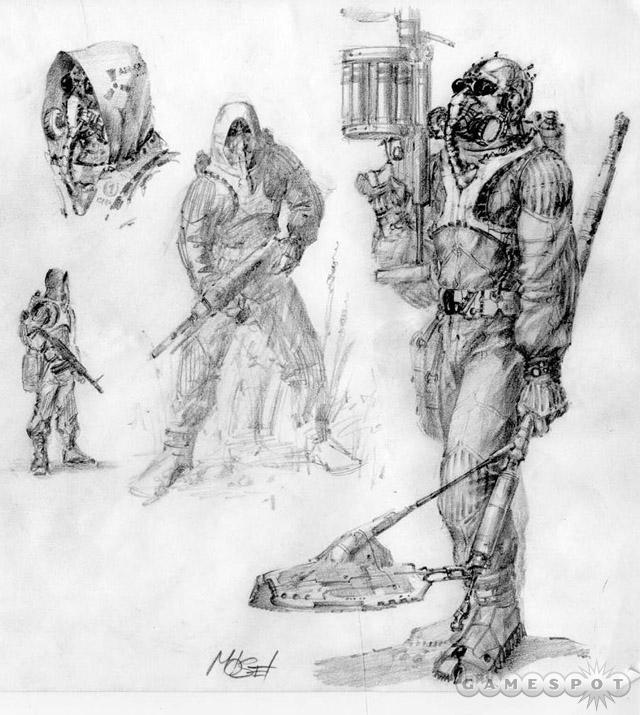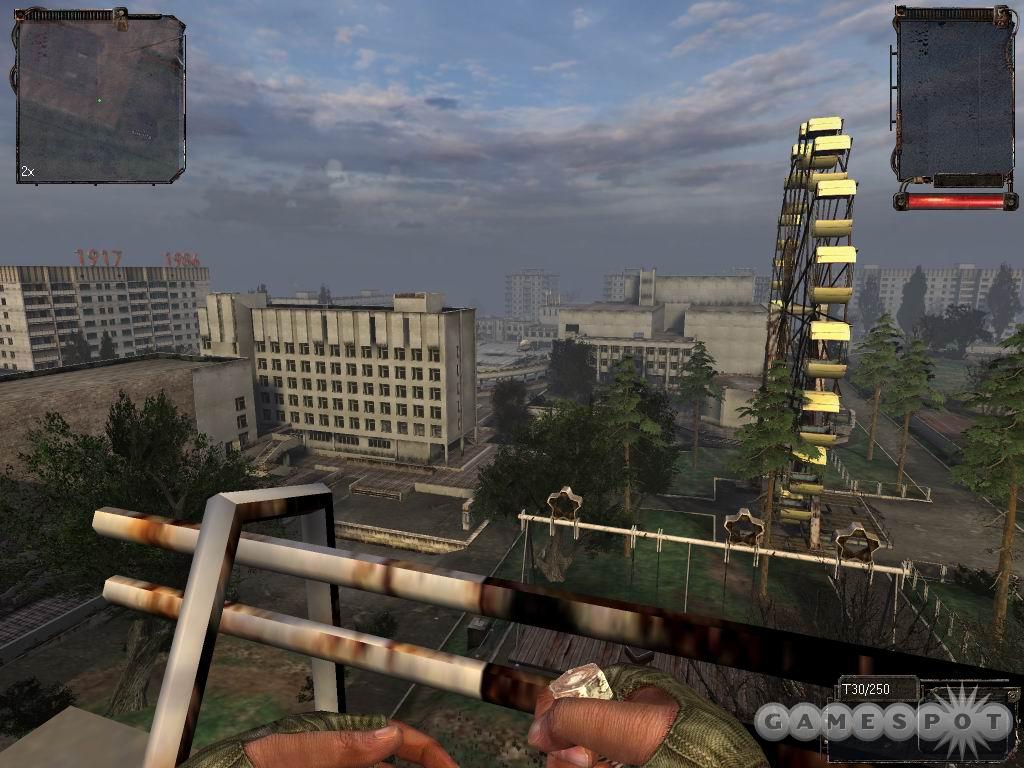S.T.A.L.K.E.R.: Shadow of Chernobyl Designer Diary #3
In this latest diary, designer Alexei Sytyanov discusses the game's environments--and the things that creep and crawl through them.
S.T.A.L.K.E.R.: Oblivion Lost is an unusual hybrid game that will feature first-person shooter and role-playing game elements. The game will take place in a near-future version of "the Zone," which is the area in and around the once-operational nuclear reactor of Chernobyl, Ukraine. Historically, Chernobyl was home to the world's worst nuclear disaster when a flawed reactor design and inadequately trained personnel led to its overheating and subsequent explosion in April of 1986. You'll play as a "stalker," who is a scavenger in search of valuable irradiated items to sell on the black market. However, you won't be alone. You'll also encounter rival stalkers and other less pleasant things in the Zone. Designer Alexei Sytyanov explains what you can expect to see in the game's environments.
Ground Zero
By Alexei SytyanovDesigner, GSC Game World

The storyline and concept behind S.T.A.L.K.E.R. is now well known. We have taken semifactual accounts concerning the Chernobyl catastrophe of 1986 and have examined the many conspiracy theories that accompany it. For those who are not aware, the final two decades of the last millennium were subject to the aftereffects of the explosion of the Chernobyl nuclear reactor in Ukraine--one of the largest industrial and ecological disasters in history. Being just 100 kilometers away from the tragedy meant that our team witnessed the consequences of this accident firsthand. The idea of S.T.A.L.K.E.R. arose from the idea of a neglected exclusion zone--a man-made hell where survival is everything.
The game posits a second accident in Chernobyl (dated April 12, 2006) that leads to the establishment of a contaminated area abundant in radioactive "anomalies" and hostile mutant creatures. The game serves as a stark warning of the potential dangers of such power. With this in mind, we worked hard to produce a believable environment that represented the horror of such a location. A vast sense of emptiness hangs above the scorched earth because this area is home to poisonous fogs, deadly anomalies, psychotropic impacts, and an ecology that can only deliver hunger into the bellies of those willing to operate within its borders. The Zone is not somewhere that welcomes humanity.
Accuracy was our key goal in creating S.T.A.L.K.E.R. The world of the Zone represents a highly detailed reconstruction of Chernobyl and its surroundings. An area of more than 30 square kilometers was authentically reproduced from extensive photographic and video surveys. Sixty percent of what you will see in the game is physically faithful in virtually every detail. The concrete power plant cooling tower, deserted street layouts, sulky multistory buildings from the Soviet era, smashed shop windows, dilapidated garages, and upturned telephone booths are all present and accurately modeled in this 3D image of a "dead city." Even the interior of the power plant sarcophagus was re-created and will be accessible in the game. For us, detail was everything if we were to succeed in establishing a believable game environment.

The locations and levels of S.T.A.L.K.E.R. form one global map where players are free to roam without any directional limits. This freedom extends in to the cities of Prypjat and Chernobyl, deep in to surface and underground laboratory complexes, and in to the vast territory of neglected military bases and testing grounds that litter the Zone. It's a huge undertaking for a developer to create such freedom and complexity, but we have worked hard to ensure that every part of the Zone is interesting, original, or faithful in terms of architecture. The look of old structures from the 1960s (known across the ex-USSR as "khushevkas") encompass much of the ruins of central city square, which has an iconographic monument to Lenin among the surrounding once-communist buildings. It is a style that helps capture a sort of dead beauty and an area caught in a time before the world changed. We're attempting to make the atmosphere be seen, felt, and heard throughout the Zone, as it entices the player to explore every corner and experience the many mortal dangers posed by its inhabitants.
We also applied this sense of realism to the landscape detail. Using our advanced graphics engine, we set out to create and control densely detailed environments, where grass and trees react to gusts of wind, and shadows and lighting fill the game with a truly dynamic edge. Our X-Ray technology engine can render not only restrictive indoor spaces but also vast open spaces too. We have created a single world where a huge number of polygons per frame are shifted about the screen, and motion-captured animation sets up a believable experience. Add to this the natural passage of night and day, and you get a technology that reveals the full glory of radioactive red forests and marshlands that are alive with creatures and mysterious plant life, among many other startling sights--like a wide range of monsters.
This brood of contaminated mutations has its own natural (or unnatural) behaviors. Some frequent specific areas, while others can be found anywhere on the map as they pursue endless hidden or inexplicable goals. No stalker should be surprised to see wastelands and dumps turned into a living mass of blind dogs, whose sixth senses allow them to discern the approaches of enemies--even from behind walls. Dwarves also populate the landscape, though these are a species whose poor eyesight confines them (usually) to dimly lit dungeons. Every stalker or scientist is susceptible to ambush from these creatures. The common plague of abandoned cities is the rat, and S.T.A.L.K.E.R. possesses them in the thousands, as they pour from every deserted house or building. When attacking, most mutated creatures will look for the advantage afforded by every type of hiding place. Surprise is part of everyday life in the Zone, and there is no way of knowing what will attack and from where. We're using our life simulation system to try to put more than flesh on these inhabitants because we want to control their every move and breathe genuine personality into their frames.

During the construction of the Zone, we had to pay special attention to environmental interactivity. This means that many of the objects in the game that you'd expect to be destructible are. We set out to make physics that would make the game more immersive, in much the same way as the architecture, the day-and-night cycles, the character scripting, and every other adherence to detail included in the game. Object manipulation is yet another level of this philosophy, for even the creatures you encounter can affect their environments--within the limitations of their natural IQ, of course. Certain groups of mutants possess telekinetic abilities and may be able to "interact" with you from a distance. If you run afoul of mutants, don't be surprised to see bricks, chairs, and even tables hurtling toward you.
In short, the devil is in the detail, and S.T.A.L.K.E.R. has more than its fair share of devils roaming through the Zone. Our team is working on preserving a high degree of realism while also enhancing this reality to make the game itself enjoyable.
Got a news tip or want to contact us directly? Email news@gamespot.com
Join the conversation